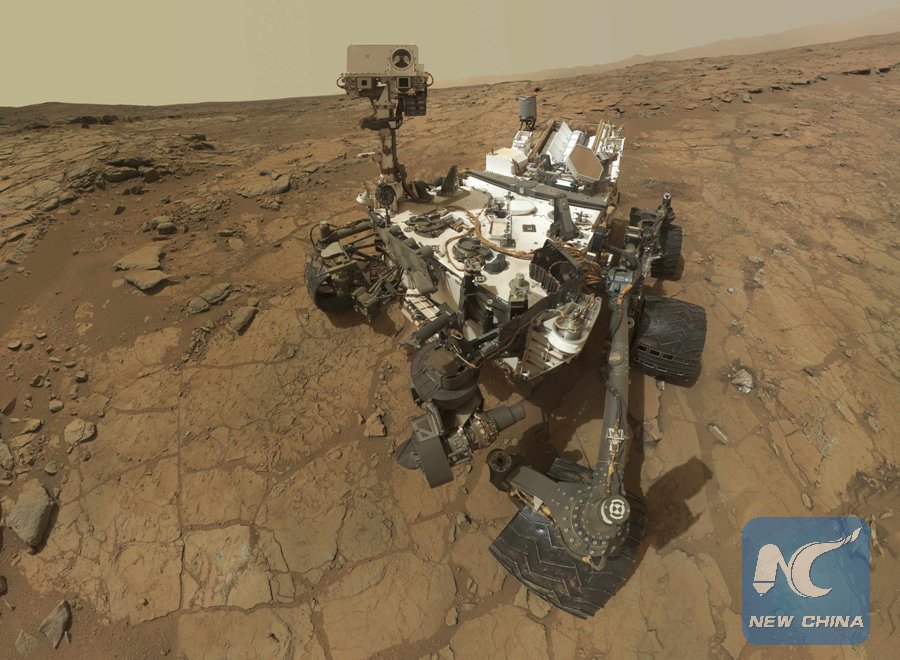
Self-portrait of the rover Curiosity, combining dozens of exposures taken by the rover's Mars Hand Lens Imager (MAHLI) during the 177th Martian day, is seen in this Feb. 3, 2013 handout image of NASA. (REUTERS/NASA)
LOS ANGELES, June 24 (Xinhua) -- NASA's Curiosity rover has detected the largest amount of methane ever measured during its mission on Mars, according to a release of NASA's Jet Propulsion Laboratory (JPL) on Monday.
The finding from the rover's Sample Analysis at Mars (SAM) tunable laser spectrometer was about 21 parts per billion units by volume (ppbv). One ppbv means that if you take a volume of air on Mars, one billionth of the volume of air is methane, according to JPL.
The finding is exciting because microbial life is an important source of methane on Earth. However, methane can also be created through interactions between rocks and water, according to the mission team.
Curiosity does not have instruments that can definitively say what the source of the methane is, or even if it is coming from a local source within Gale Crater or elsewhere on the planet, said JPL.
"With our current measurements, we have no way of telling if the methane source is biology or geology, or even ancient or modern," said SAM Principal Investigator Paul Mahaffy of NASA's Goddard Spaceflight Center in Greenbelt, Maryland.
The mission team conducted a follow-on methane experiment this past weekend, which shows the methane levels have sharply decreased, with less than 1 part per billion units by volume detected. According to JPL, that is a value close to the background levels Curiosity sees all the time.
The new finding suggests the largest amount of methane detection last week was one of the transient methane plumes that have been observed in the past, according to JPL.
While scientists have observed the background levels rise and fall seasonally, they have not found a pattern in the occurrence of these transient plumes.
"The methane mystery continues," said Ashwin Vasavada, Curiosity's project scientist at JPL. "We're more motivated than ever to keep measuring and put our brains together to figure out how methane behaves in the Martian atmosphere."

